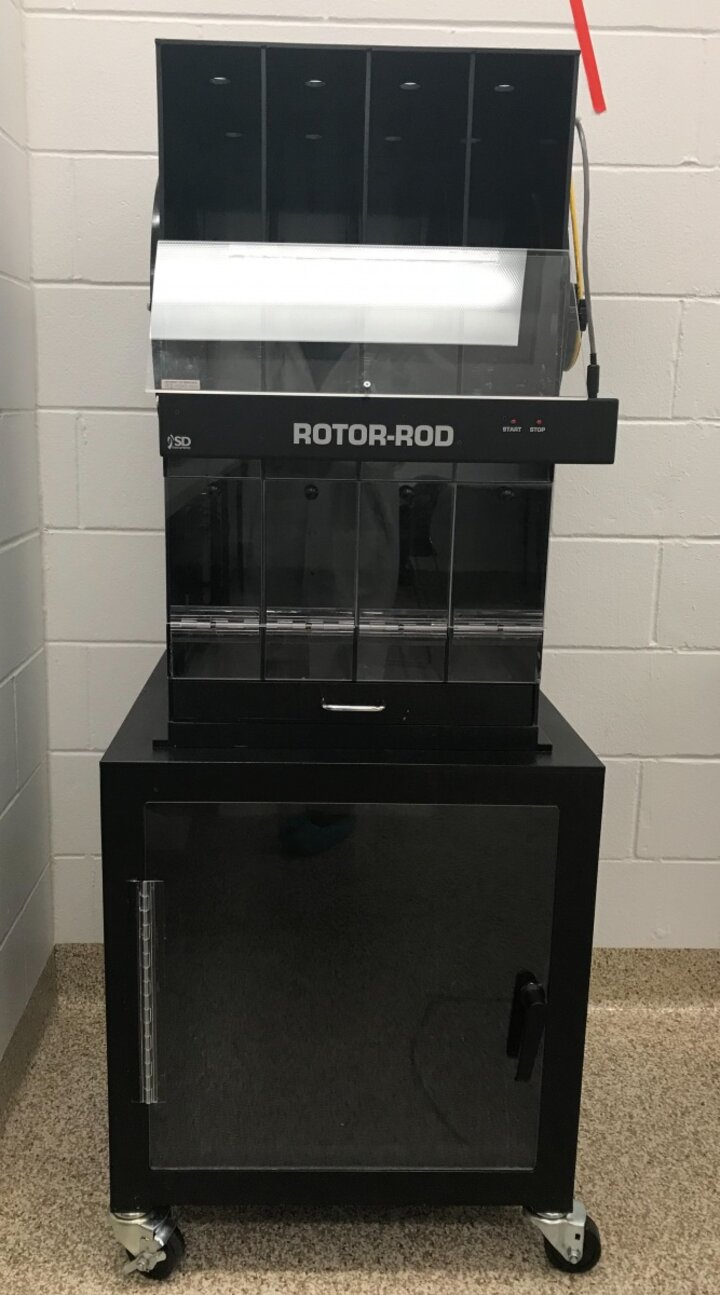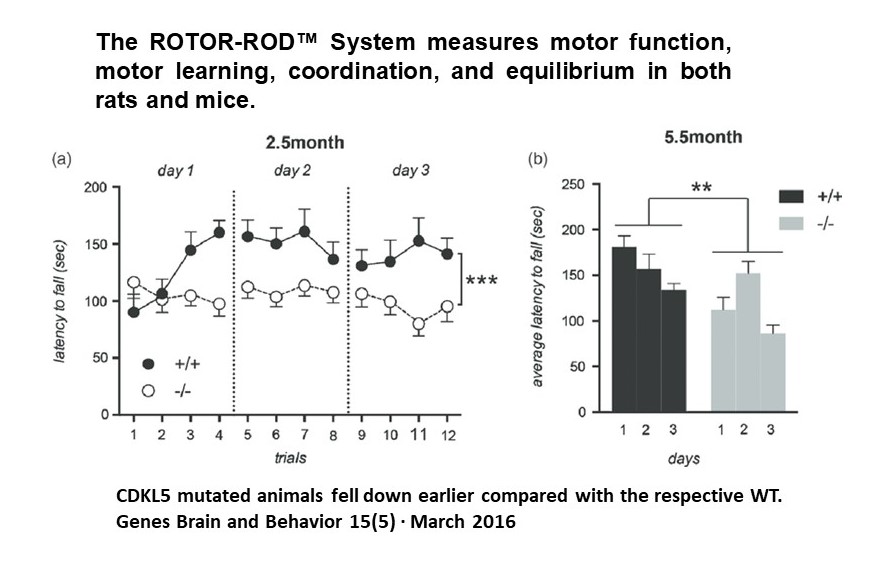
The ROTOR-ROD™ System can be used to measure motor function, motor learning, coordination, and equilibrium in both rats and mice. The ROTOR-ROD takes full advantage of the Windows® operating system with data organization and management software that combines power and flexibility with ease of use. The ROTORROD is designed with adjustable falling heights from 18 - 48 inches to utilize the ‘fear of falling’ instinct as a natural motivator.
Up to four animals are placed on the rod within their individual lanes in the ROTOR-ROD enclosure. Once all animals are placed, the ROTOR-ROD “Start” button is pressed and the rod begins rotating.
The rotation is controlled by a speed control ramp previously defined by the user. The speed control ramp is constructed of segments that are accelerating, constant or decelerating in any mix. This feature allows the construction of straight line acceleration speed control ramps, constant speed control ramps and a varying speed control ramps. You can use as many segments as will fit in the maximum run time of 1000 seconds.
Seven photobeams are embedded in each of the four lanes of the ROTOR-ROD enclosure. One to four lanes can be used for testing. When each animal falls from the rotating rod, the photobeams are broken and the ROTOR-ROD software records the animal’s latency to fall, distance traveled and RPM of the rod at the fall.
The Rotor Rod can be set to stop when the last animal falls or when a preset duration is reached. Alternatively the user can stop the test at any time by pushing the Stop button.
ROTOR-ROD utilizes a database to store all study results in a single file (table) format ready for export. This eliminates the need to cut and paste multiple files together in order to export study results to statistical packages.
Features:
- Automatically records fall latencies, distances traveled, and RPM at time of fall
- Secured enclosure prevents animals from escaping after a safe landing
- Rod speed ramps can be any combination of constant, accelerating and decelerating segments
- All study data is stored in a database, providing quick and easy export
This test is used to phenotype strains of transgenic/knockout mice and evaluate novel chemical entities for their effect on motor performance.
Workflow
- At least two weeks of training are needed to ensure that all subjects have learned the task to the same degree.
- In the fixed rotation protocol, the animals are placed on a rod which accelerates to and then constantly rotates at 10 rpm. Subjects receive three sessions of testing per week, three trials per session; the average of the three trials is presented daily.
- In the accelerating protocol, the animals are placed on a rod that accelerates quickly from 0-5 rpm and then gradually from 5-20 rpm. Testing consists of three sessions per week, two trials per session; the average of the two trials is presented daily.
- A trial is complete when the all animal falls or the time period ends; overall testing can run as long as three weeks.
Typical data
